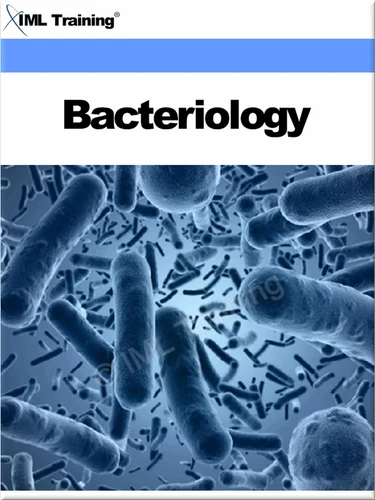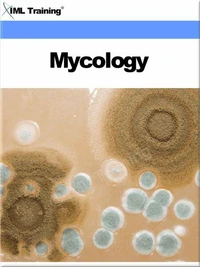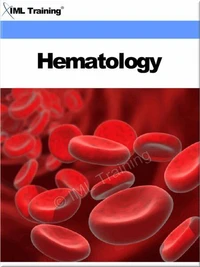Bacteriology (Microbiology and Blood). Microbiology and Blood
Par :Formats :
Disponible dans votre compte client Decitre ou Furet du Nord dès validation de votre commande. Le format ePub protégé est :
- Compatible avec une lecture sur My Vivlio (smartphone, tablette, ordinateur)
- Compatible avec une lecture sur liseuses Vivlio
- Pour les liseuses autres que Vivlio, vous devez utiliser le logiciel Adobe Digital Edition. Non compatible avec la lecture sur les liseuses Kindle, Remarkable et Sony
- Non compatible avec un achat hors France métropolitaine
 , qui est-ce ?
, qui est-ce ?Notre partenaire de plateforme de lecture numérique où vous retrouverez l'ensemble de vos ebooks gratuitement
Pour en savoir plus sur nos ebooks, consultez notre aide en ligne ici
- FormatePub
- ISBN978-1-78258-091-1
- EAN9781782580911
- Date de parution14/01/2013
- Protection num.Adobe DRM
- Infos supplémentairesepub
- ÉditeurTSD Training
Résumé
BacteriologyBacteriology is the study of bacteria and involves the identification, classification, and characterization of bacterial species. The purpose of clinical laboratory procedures is to provide diagnostic work with specific information needed about the disorders observed in the patient. Clinical bacteriology can contribute by supplying data about the microscopic life involved and the susceptibility of such life to particular drugs.
To identify bacterial growth, you must take certain steps that will enable you, through a process of elimination, to choose the microscopic form that fits the findings you have obtained. Steps that are often essential include:1. Observing the type of growth when first isolated on culture media.2 Making a microscopic examination on stained material from an isolated culture of that colony.3. Performing various tests to obtain a list of the characteristics of the organism.4.
Making a complete identification of the organism. This course is part of our Microbiology and Blood series. Includes a questions and answers section at the end of each lesson. Full illustrations and diagrams included. Lessons:- Microscopic Examination and Cultivation of Bacteria- Common Tests and Gram-Positive Cocci- Gram-Negative Cocci; Gram-Positive Bacilli- Enterobacteriaceae- Other Pathogenic Gram-Negative Bacilli and Antibiotic Sensitivity Tests
To identify bacterial growth, you must take certain steps that will enable you, through a process of elimination, to choose the microscopic form that fits the findings you have obtained. Steps that are often essential include:1. Observing the type of growth when first isolated on culture media.2 Making a microscopic examination on stained material from an isolated culture of that colony.3. Performing various tests to obtain a list of the characteristics of the organism.4.
Making a complete identification of the organism. This course is part of our Microbiology and Blood series. Includes a questions and answers section at the end of each lesson. Full illustrations and diagrams included. Lessons:- Microscopic Examination and Cultivation of Bacteria- Common Tests and Gram-Positive Cocci- Gram-Negative Cocci; Gram-Positive Bacilli- Enterobacteriaceae- Other Pathogenic Gram-Negative Bacilli and Antibiotic Sensitivity Tests
BacteriologyBacteriology is the study of bacteria and involves the identification, classification, and characterization of bacterial species. The purpose of clinical laboratory procedures is to provide diagnostic work with specific information needed about the disorders observed in the patient. Clinical bacteriology can contribute by supplying data about the microscopic life involved and the susceptibility of such life to particular drugs.
To identify bacterial growth, you must take certain steps that will enable you, through a process of elimination, to choose the microscopic form that fits the findings you have obtained. Steps that are often essential include:1. Observing the type of growth when first isolated on culture media.2 Making a microscopic examination on stained material from an isolated culture of that colony.3. Performing various tests to obtain a list of the characteristics of the organism.4.
Making a complete identification of the organism. This course is part of our Microbiology and Blood series. Includes a questions and answers section at the end of each lesson. Full illustrations and diagrams included. Lessons:- Microscopic Examination and Cultivation of Bacteria- Common Tests and Gram-Positive Cocci- Gram-Negative Cocci; Gram-Positive Bacilli- Enterobacteriaceae- Other Pathogenic Gram-Negative Bacilli and Antibiotic Sensitivity Tests
To identify bacterial growth, you must take certain steps that will enable you, through a process of elimination, to choose the microscopic form that fits the findings you have obtained. Steps that are often essential include:1. Observing the type of growth when first isolated on culture media.2 Making a microscopic examination on stained material from an isolated culture of that colony.3. Performing various tests to obtain a list of the characteristics of the organism.4.
Making a complete identification of the organism. This course is part of our Microbiology and Blood series. Includes a questions and answers section at the end of each lesson. Full illustrations and diagrams included. Lessons:- Microscopic Examination and Cultivation of Bacteria- Common Tests and Gram-Positive Cocci- Gram-Negative Cocci; Gram-Positive Bacilli- Enterobacteriaceae- Other Pathogenic Gram-Negative Bacilli and Antibiotic Sensitivity Tests






















